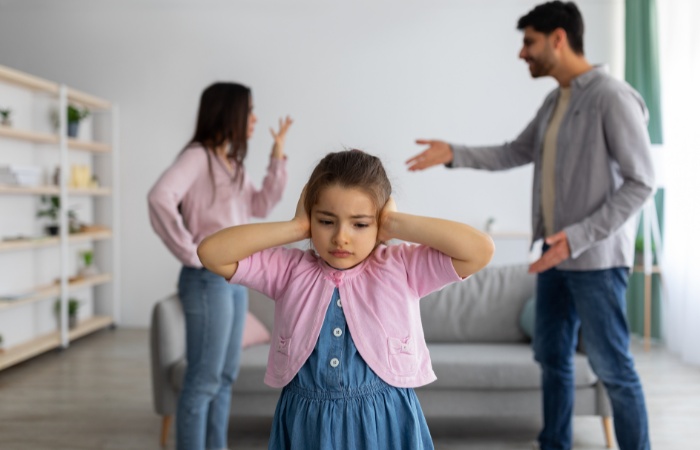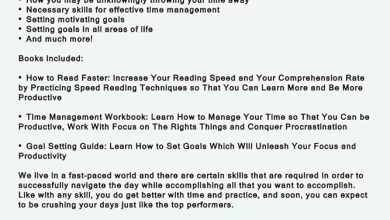How To Build Self Esteem After Childhood Trauma?

Childhood trauma can leave deep scars that impact our self-esteem and confidence into adulthood. Whether it’s neglect, abuse, or other forms of trauma, the effects can be long-lasting and challenging to overcome.
However, building self-esteem after childhood trauma is possible with the right approach and support. Now you may be thinking: How to build self esteem after childhood trauma?
The best way to build self-esteem after childhood trauma is by seeking therapy, practicing self-care, developing positive behaviors, and building supportive relationships.
In this blog post, we will explore strategies to help you build self-esteem and heal from childhood trauma. So, read the entire content.
Can Childhood Trauma Affect Self-Esteem?
Yes, childhood trauma can have a negative impact on self-esteem. Studies have shown that experiences of childhood abuse, neglect, and other traumatic experiences can lead to a sense of shame, guilt, and worthlessness in children, which can carry over into adulthood.
Traumatized children may exhibit behaviors that reflect a lack of self-worth, such as self-isolation, low self-confidence, and negative self-talk. The effects of childhood trauma can also contribute to various mental health issues, including depression and anxiety.
However, you should note that the healing process is possible, and seeking support from mental health professionals and community service providers can help individuals overcome the negative impact of childhood trauma.
Long-Term Effects Of Childhood Trauma On Self-Esteem
Childhood trauma, such as physical or sexual abuse, emotional abuse, or traumatic experiences, can have a negative impact on a child’s sense of self-esteem and self-worth. A longitudinal study found that childhood trauma victims often struggle with low self-esteem into adulthood, leading to negative behaviors and poor mental and physical health outcomes.
The role of childhood experiences, especially in the family relationship, is a significant factor in the development of self-esteem. Mental health professionals and national health programs can play a vital role in supporting healing and building self-esteem in traumatized children.
Community violence exposure is another factor that can erode self-esteem in children, and community service providers can offer support to those impacted. Family bonding also plays a significant role in children’s self-esteem, with higher quartiles of family bonding scores representing a stronger relationship with self-esteem.
What Childhood Trauma Leads To Low Self-Esteem?
Low self-esteem can manifest in many ways, including negative self-talk, avoiding challenges, and difficulty forming and maintaining healthy relationships. Here, we will explore some common childhood traumas that can lead to low self-esteem.
Emotional Abuse
Emotional abuse is a form of abuse that involves verbal and non-verbal actions that harm a child’s emotional well-being. This abuse can include belittling, criticizing, and isolating a child from others.
Children who experience emotional abuse may develop low self-esteem because they internalize the negative messages they receive, leading them to believe they are not good enough.
Physical Abuse
Physical abuse is a form of abuse that involves physical harm to a child. Children who experience physical abuse may develop low self-esteem because they may feel ashamed of their bruises, cuts, or other injuries. They may also feel they are to blame for the abuse and feel they deserve it, leading to a sense of worthlessness.
Neglect
Neglect is a form of abuse that involves failing to provide a child’s basic needs, such as food, shelter, and medical care. Children who experience neglect may develop low self-esteem because they may feel like they are not important enough to be taken care of. A feeling of worthlessness may also result from feeling unloved and unwanted.
Bullying
Bullying is a form of abuse that involves intentional harm to a child through verbal or physical actions. Children who experience bullying may develop low self-esteem because they may internalize the negative messages they receive from bullies. They may also feel isolated and alone, leading to a sense of worthlessness.
Divorce or Separation
Divorce or separation can be a traumatic experience for children, especially if they feel they are to blame for the breakup. Children who experience divorce or separation may develop low self-esteem because they may feel unwanted or unloved by one or both parents. As well as feeling inadequate, they may also think that they cannot keep their family together.
How To Build Self Esteem After Childhood Trauma?
The healing process after childhood trauma involves addressing the traumatic experience and its impact on the individual’s life. Mental health professionals can be crucial in supporting individuals in this process. Some ways to build self-esteem after childhood trauma include:
- Seeking Therapy: Therapy can help individuals process the traumatic experience and learn coping skills to manage its adverse impacts on their life. It can also provide a safe space to express their feelings and work through self-esteem issues.
- Practicing Self-care: Engaging in activities that promote physical and emotional well-being can help build self-esteem. This can include regular exercise, getting enough sleep, eating a healthy diet, and engaging in activities that bring joy and fulfillment.
- Developing Positive Behaviors: Engaging in positive behaviors, such as volunteering, setting goals, and practicing gratitude, can help individuals feel more confident and self-worth.
- Building Supportive Relationships: Building healthy relationships with friends, family, and community members can provide a support system that can boost self-esteem. Relationships built on trust, respect, and empathy can help individuals feel valued and validated.
Read Also: How Education Helps In Establishing Self Esteem?
Can You Fully Recover From Childhood Trauma?
Recovering from childhood trauma is a process that varies from person to person. While some individuals may fully recover and go on to live fulfilling lives, others may struggle with the effects of their trauma throughout their lifetime.
Recovery may involve seeking therapy, developing coping strategies, and building supportive relationships. While the impact of childhood trauma may never fully disappear, it is possible to learn to manage the negative effects and develop resilience.
The key is to seek support and actively work towards healing, which can ultimately lead to a greater sense of well-being and improved quality of life.
Common Obstacles And Overcomes To Building Self-Esteem After Childhood Trauma
Low self-esteem can be a long-term consequence of childhood trauma, making it challenging to build a healthy self-image. However, with the right strategies and support, overcoming these obstacles and building self-esteem is possible. Here, we will explore some common challenges to building self-esteem after childhood trauma and how to overcome them.
Obstacle 1: Negative Self-talk
Negative self-talk is a common obstacle to building self-esteem. When a person has experienced childhood trauma, they may have internalized negative messages that make it difficult to see their strengths and accomplishments. Negative self-talk can also be a self-fulfilling prophecy, making it harder for a person to take risks and try new things.
Overcome 1: Positive Affirmations
One way to overcome negative self-talk is to practice positive affirmations. Positive affirmations involve repeating positive messages to oneself, such as “I am capable” or “I am worthy.” These messages can help to counteract the negative messages that a person may have internalized from childhood trauma. Repeating positive affirmations regularly can help to build a more positive self-image.
Obstacle 2: Avoiding Challenges
Avoiding challenges is another common obstacle to building self-esteem. When a person has experienced childhood trauma, they may feel like they are not capable of overcoming obstacles or achieving their goals. This can lead to a lack of motivation and a fear of failure.
Overcome 2: Setting Achievable Goals
One way to overcome this obstacle is to set achievable goals. Setting and achieving small goals can help build confidence and increase motivation. As a person achieves more and more goals, they can gradually set more challenging goals, building their self-esteem along the way.
Obstacle 3: Difficulty Forming Healthy Relationships
Difficulty forming healthy relationships is another common obstacle to building self-esteem. Childhood trauma can make it difficult for a person to trust others, leading to isolation and loneliness.
Overcome 3: Building a Support System
One way to overcome this obstacle is to build a support system. This can involve contacting family and friends, joining a support group, or seeking professional help. A support system can help increase social connections, build trust, and improve self-esteem.
Obstacle 4: Shame and Guilt
Shame and guilt are common emotions that can arise from childhood trauma. When a person feels ashamed or guilty, seeing their worth and value can be challenging.
Overcome 4: Practicing Self-compassion
One way to overcome shame and guilt is to practice self-compassion. Self-compassion involves treating oneself with kindness and understanding, similar to treating a close friend. Practicing self-compassion can help counteract the negative messages a person may have internalized from childhood trauma.
Final Thoughts
Building self-esteem after childhood trauma is a challenging but worthwhile journey. Hopefully, from now on, you should know how to build self esteem after childhood trauma.
Taking the time to focus on self-care and positive affirmations can be empowering and help build a strong self-esteem foundation. Additionally, speaking with a professional can be extremely helpful in navigating the process of healing and building self-esteem.
Read More: How To Build Self Esteem After Narcissistic Abuse?



